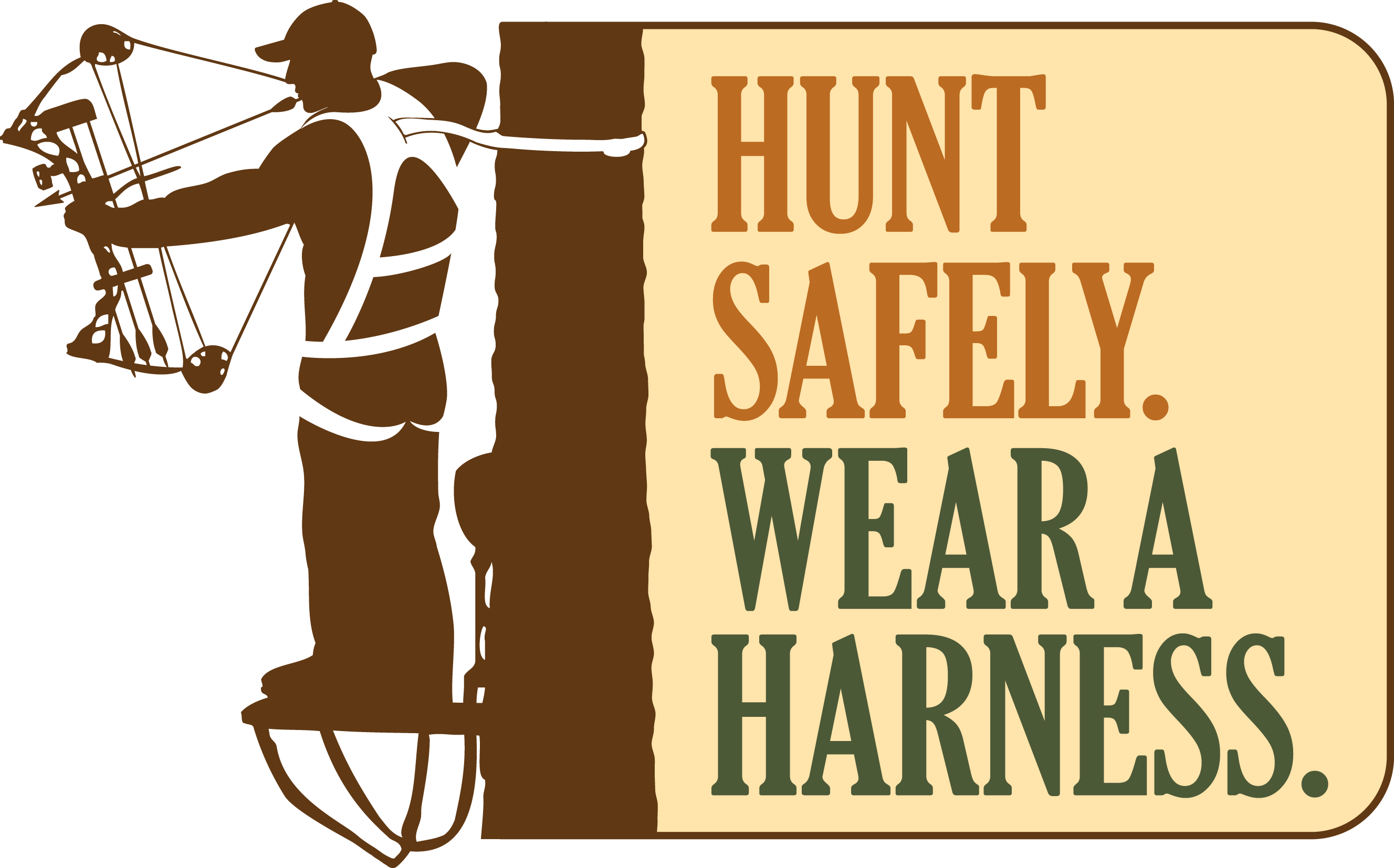Safe Hunting Tips
STEPS to Safe Tree Stand Hunting
Hundreds of Pennsylvania hunters have been seriously injured in tree stand-related accidents.
By remembering these
STEPS to tree stand safety, you can reduce your risk of falling and be prepared to signal for help if you do fall.
- Safety harness or belt: Always wear a full-body safety harness whenever your feet leave the ground.
-
Tree stand maintenance: Check your stand for missing or broken parts before each use.
-
Evaluate your stand site: Select
trees that are alive and will support your weight
-
Partners and plans: Hunt with a partner and have a plan in case of an emergency.
-
Signals: Carry a whistle or other signaling device should you need assistance.
Hunters should also:- use a haul line to bring gear up
- Make sure firearms are unloaded with the action
Before climbing in your stand this season, remember to
HUNT SAFELY. WEAR A HARNESS.
Hunting Safety Tips
- Positively identify your target. Be sure you are shooting at legal game. Never shoot at sounds or movement.
- Stay in the zone! Hunters should be spaced 25 to 40 yards apart, and always in sight of one another. Each hunter’s zone of fire spans about 45 degrees directly in front of the hunter. Never shoot at game moving between you and someone else. Follow the link for more information on
maintaining your safe zone-of-fire.
- Plan your hunt! Let someone know where you're hunting and when you'll return.
- Buckle up! If you hunt from an elevated stand, always wear a full-body, fall-restraint device as soon as your feet leave the ground until they return.
- Keep fit! Hunting is hard work. Don't become a statistic. keep physically fit. Start with a check-up and follow your doctor's advice.
- Stay found! Become familiar with your hunting area. Learn how to use a map and compass or GPS unit. Be prepared for emergencies. Carry a basic
survival kit and know how to use it.
- Be seen! Wear or display the required amount of fluorescent orange clothing.
Fluorescent Orange Requirements
- Orange is required during firearms seasons, regardless of your sporting arm.
- Hunters must wear 250 square inches of fluorescent orange that's visible from 360 degrees on the head, chest, and back. A hat and vest satisfy this requirement.
- Whenever orange is required, it must be worn at all times while hunting.
- Even when orange isn't required, such as archery seasons, it's still strongly recommended.
Turkey Hunting Safety Tips
To keep
turkey hunting a safe and enjoyable activity, follow these rules: - Positively identify your target! Be certain the bird is fully and plainly visible before pulling the trigger. Don't shoot at sounds or movement.
- Never stalk a turkey! Movement or sounds you think are a turkey may be another hunter. Be patient; let the bird come to you.
- Protect your back. Select a large tree, rock or other natural barrier while calling. Hunt in open woods.
- Shout "STOP" to alert approaching hunters. Never move, wave or make turkey sounds to alert others of your position.
- Dress to be safe. Never wear red, white, blue or black clothing. These are the colors found on mature gobblers.
- Cover up. Don't carry harvested birds in the open. Cover them with fluorescent orange or completely conceal from view in a game bag.
- Be seen. Wear or display the required amount of fluorescent orange, particularly when moving.
Big-Game Drive Tips
- Plan your drives. Stay organized and make sure everyone knows their role. Decide how many drivers are needed and where standers will be located.
- Communicate. Stay in constant communication with other drivers so you know where everyone is at all times. Keep in mind the use of handheld radios or cell phones to alert other hunters of the presence or movement of wildlife while hunting is prohibited.
- Know your zone. Identify the areas where you can safely shoot and remember your zone of fire changes as you move.
- When in doubt, don't shoot. If forced to make a split-second decision about whether it's safe to take a shot, err on the side of caution and don't shoot.
Transporting Firearms
- Always make sure firearms are unloaded before putting them in a vehicle. Never put a loaded firearm in or against a motor vehicle or any attachments, even if the vehicle is stationary.
- A firearm is considered loaded when live ammunition is in the chamber or attached magazine.
- Loaded muzzleloaders should be safely discharged before being transported in a vehicle.
Primary Firearm Safety Rules
When using a firearm, be sure to follow these five primary safety rules. You can remember these rules by thinking
SMART.
Safe Direction: Keep your firearm pointed in a safe direction at all times.
Make sure: Positively identify your target.
Always check: Know what's beyond your target before shooting.
Respect firearms: Treat all firearms as if they are loaded.
Trigger caution: Don't touch the trigger until you are ready to shoot.